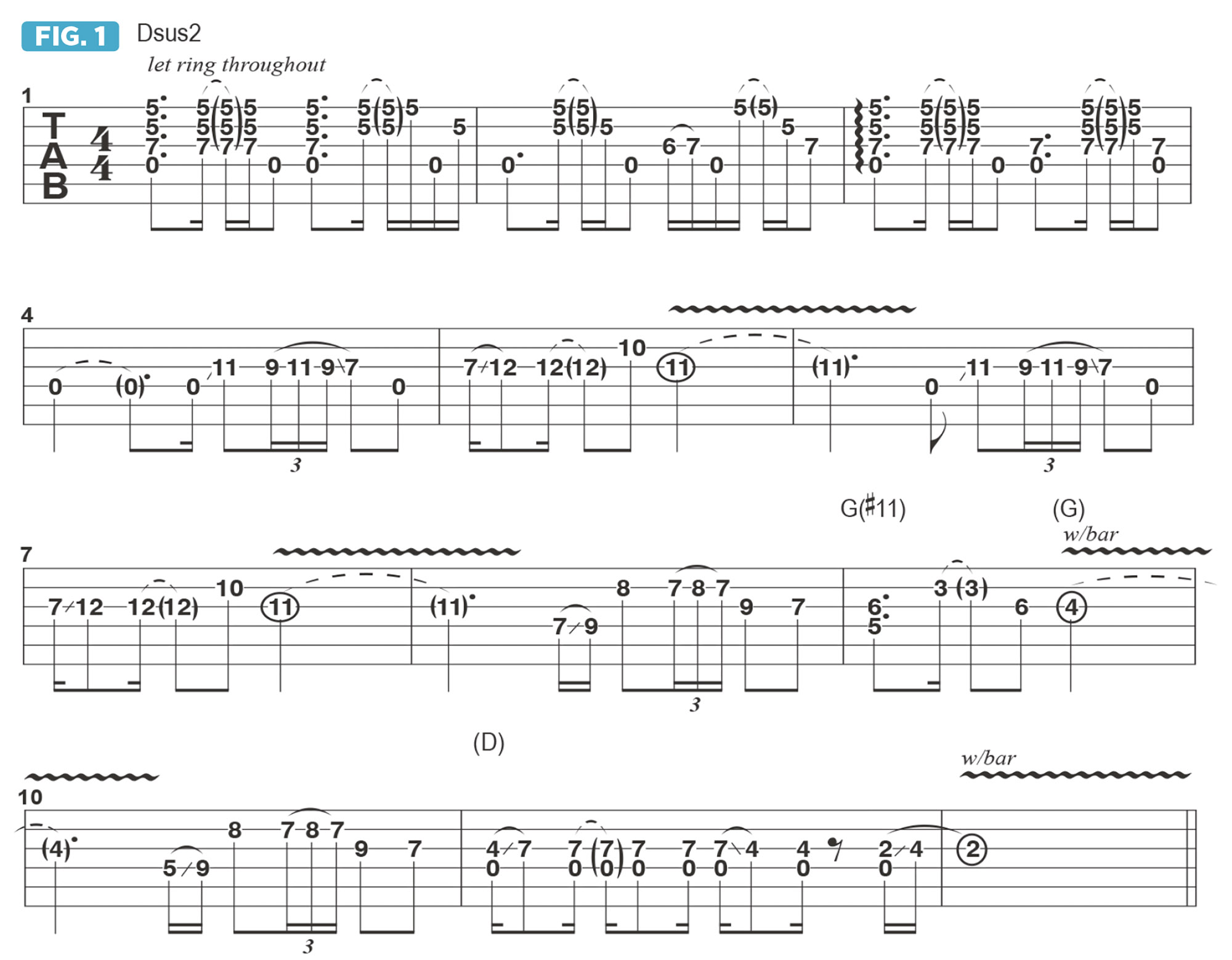
Hello everyone, and welcome to my first Guitar World column! I’d like to start off with an essential element of musical understanding, which is the knowledge of intervals. To illustrate, I’ll cite a passage from my song Believe, from my new album, Charisma.
An interval is the distance between two notes, measured in half steps and whole steps. Believe offers a great way to examine intervallic relationships, as there’s a repeating, droning root note throughout the opening melody, and it’s helpful to be aware of the intervallic relationship between the root and each individual melody note.
Figure 1 shows how I kick off the tune, with a three-bar vamp on Dsus2 setting up the introduction of the melody. Bars 4-8 show the initial melody that’s played over Dsus2, and bars 9 and 10 progress to the IV (four) chord, G, followed by a return to the tonic, D, in bars 11 and 12. Notice that over the G chord, I include a C# note; in relation to a G root, C# is the #11 (sharp 11), which may also be thought of as the b5 (flat 5).

The best way to begin looking at the guitar intervallically is to be aware of the note names of the open strings; low to high, they are E A D G B E.
As notes are fretted on any given string, there’s one rule you should remember: as you move through the “musical alphabet,” with the notes A B C D E F G, there are two instances, between B and C and between E and F, where consecutive letter names are only a half step, or one fret, apart. All the other consecutive letter-name notes are a whole step, and two frets, apart.
So there’s a note that “lives” in between. For example, between A and B there’s A# (A sharp), also known as Bb (B flat). Likewise, between C and D there’s C#, or Db.

Figures 2 and 3 illustrate the D major scale, which consists of the notes D, E, F#, G, A, B, C#. Intervallically, the major scale notes are identified as degrees, numbered 1 2 3 4 5 6 7, with “8” being the root note (1) one octave higher. This is true for every major scale. Figure 4 shifts all the notes up one fret to sound the Eb major scale.

Let’s now play the same D major scale up a single string, as shown in Figure 5. Playing the notes this way, it’s easy to see the distance between each consecutive scale degree.
Figure 6 is a descending melody that’s based on the D major scale and moves from 14th position down to 9th position.

The building blocks of chords are triads, which are made up of three notes. Figure 7 shows the notes of a D major triad: D, F#, A, or 1 maj3, 5, which form a D major chord.
One can strengthen intervallic awareness by playing each note of the D major scale against the open D root note, as I demonstrate in Figure 8, with an awareness to how each note “sits” over the root.







